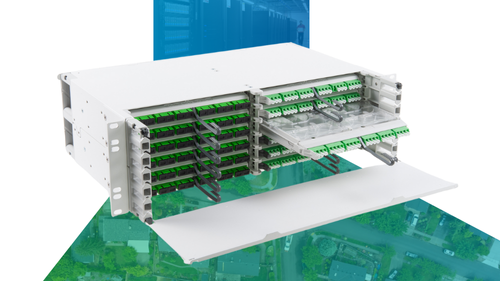Predictions serve a dual purpose. On one hand, they challenge us to fulfill the promise of new offerings and innovation. On the other, they excite us about the kinds of technologies and breakthroughs that might make it into our homes this year.
For 2017, I am predicting the potential for several advancements in the home that could help enable some of the latest ‘headline’ consumer technologies, such as IoT and VR etc. Here are four key innovations that I can see happening this year:
Gateways get companions and open the smart home as new classes of home device emerge
Single gateways and routers have done a great job creating connections for Wi-Fi devices in the home. As broadband speeds to the home increase, this needs to be reflected inside the home. The gateway is set to get some help from Wi-Fi extenders increasing range and performance to support services like 4K video over Wi-Fi.
These new devices offer both challenge and opportunity:
- Challenge - to create better Wi-Fi and not act as interference. We solve this with software in the devices, supported by the cloud – to ensure best channel use and make sure the home clients are on the right access point, roaming quickly across them.
- Opportunity - to add functionality to devices deeper inside the home and in rooms where connectivity is most needed. This could be, for example, IoT low-power radios to support smart device onboarding; or voice input and audio output – allowing the device to ‘double up’ as a wireless connectivity point and a smart assistant.
Adding functionality will enable service providers to leverage their position in the home and converge Wi-Fi capex spend with new IoT and smart assistant opportunities - it makes economic sense to deploy aggregated services.
In addition, increasing the footprint of extenders could also support emerging 60GHz applications, such as fast-sync to mobile devices and low latency un-tethered VR, that require in-room high bandwidth.
Service providers can take advantage of this device demarcation to add connectivity features in an all-in-one device. The natural evolution is to a future home architecture with a single connectivity device per room.
Shared Spectrum and convergence to 5G – experimentation and first reference architectures will emerge
As we move towards 5G, combining multiple wireless technologies into a seamless experience will be key. Consumers are only interested in the best access to the service or content on whatever device.
This is driving convergence of wireless connectivity at the device level to embrace connectivity for IoT, gigabit broadband, roaming, voice, VR, AR – independent of the physical layer. And, the lines between unlicensed and licensed spectrum-based devices are set to blur - more than the LTE + Wi-Fi capabilities in devices today.
New approaches to spectrum use – e.g., CBRS shared spectrum and frequency control via Cloud Spectrum Access Solutions as well as the aspirations of 5G – mean that service providers that don’t own LTE spectrum will be able to offer a seamless and robust solution across macro and pico wireless solutions.
We envisage a new class of home cell that is Wi-Fi dominant in the home and supports the 3.5GHz CBRS band promise over LTE – enabling the best of Wi-Fi and LTE within the home. The service provider augments the reach of 3.5GHz LTE with 5GHz Wi-Fi, and uses local wired connection for backhaul.
While mmWave promises point-to-multipoint transmissions at 10Gbp to get into the home (in good line of sight conditions), the 5G signal will be converted to Wi-Fi or sub 6GHz LTE inside the home. Solutions that terminate and retransmit, convert, and translate will be key for this multi-hop connection
Providers to investigate VR for live TV - testing the blended experience
The introduction of mmWave connectivity at 60GHz could provide more than 25Gbps of bandwidth wirelessly around the home – proving a platform for next-gen services such as untethered VR/AR.
VR/AR presents a number of challenges to begin considering:
- Short-term - to support the large file downloads of gaming and graphic centric VR/AR experiences
- Mid-term - to support low-volume VR experiences from the ‘best seat in the stadium’
- Long-term - to support a million unique streams from the stadium – requiring new technologies and improvements in event IT infrastructure. Today live VR generates 6-10Mbps per view at 1080p levels and this will increase significantly with 4K level transmissions.
So long-term, VR/AR may not just be the prerogative of the gaming community. The industry is experimenting now to find the best blend of VR/AR and TV experiences.
The TV experience offers multi-camera views, helping the viewer find the best action at a live event. Adding VR/AR allows the users themselves take control of the camera. The ability to switch between live and user-controlled experiences will be an area to watch over the coming years as VR/AR tries to make its mark. TV producers are already experimenting with VR segments of scheduled live shows – allowing the viewer to continue immersing themselves after the live show has ended
Virtualization will increase hardware capabilities – not make CPE hardware redundant.
The predicted demise of hardware is not happening - the reality is that software partitioning between device and cloud is changing. When software has shifted to the cloud – there will still be a gateway and a set-top – very similar to today and with new features like IoT, Smart Assistant and 60GHz
Virtualization for vCPE is about the repartition of software features – allowing new services that require low latency knowledge of the home to be handled in the cloud. This enables rapid development cycles; development once in the cloud versus multiple times on different platforms and best in class services. For example, the best parental control solution could run on all platforms from a single cloud instance instead of trying to develop for all unique platforms.
Where does this leave CPE? On one hand there is less need to add more CPU capability if the service can be processed in the cloud. On the other, there are services that should stay in the CPE – for example; to benefit from low latency; to ensure optimal graphics performance or for the best wireless connectivity - guaranteeing a clear future for physical CPE.
















